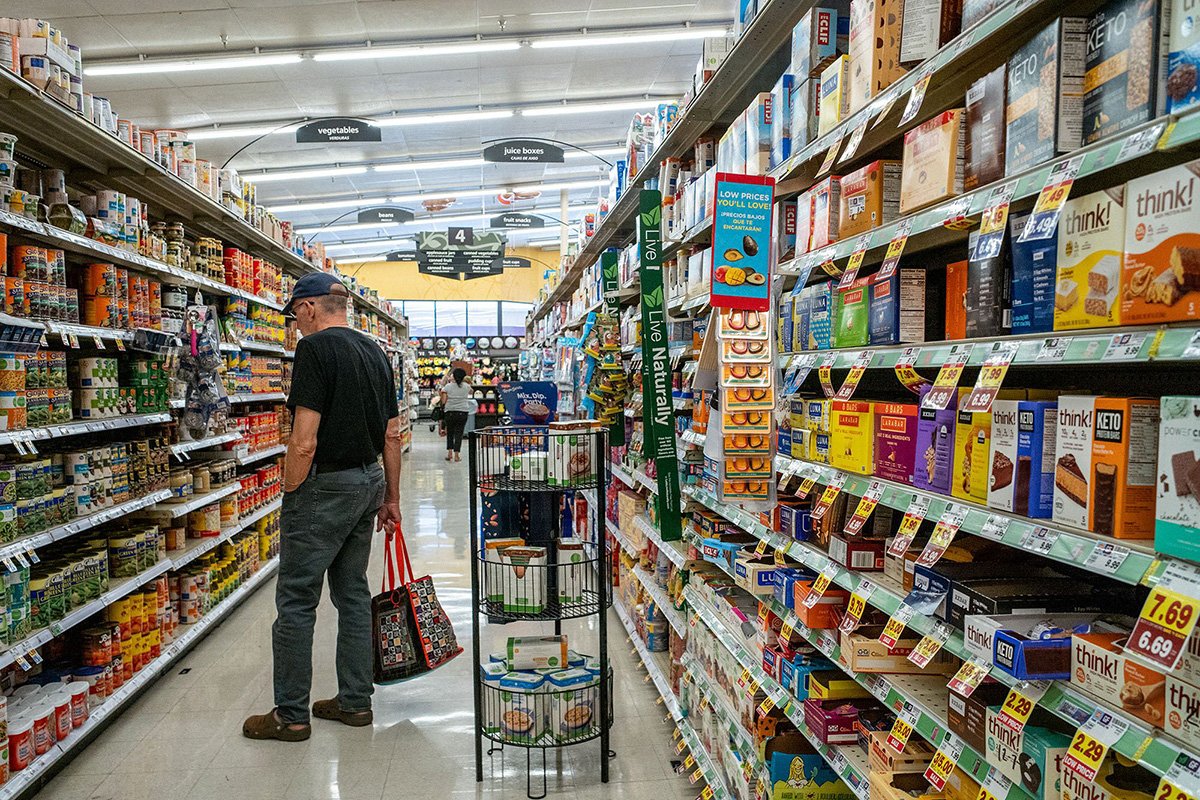 A customer shops in a grocery store in Houston. Photographer: Brandon Bell/Getty Images
A customer shops in a grocery store in Houston. Photographer: Brandon Bell/Getty Images
Underlying U.S. inflation ran at a faster-than-expected monthly pace in August, leaving the door open for additional interest-rate hikes from the Federal Reserve.
The so-called core consumer price index (CPI), which excludes food and energy costs, advanced 0.3 percent from July, marking the first acceleration since February, Bureau of Labor Statistics (BLS) data showed Wednesday. From a year ago, it has increased 4.3 percent, in line with estimates and marking the smallest advance in nearly two years.
Recommended For You
Economists favor the core gauge as a better indicator of underlying inflation than the overall CPI. That measure rose 0.6 percent from the prior month, the most in over a year and reflecting higher energy prices. Gasoline costs accounted for more than half of the advance in the overall measure in August, according to BLS.

The report adds to concerns that the renewed momentum in the economy is reigniting price pressures. While Fed officials have been growing more optimistic that they can tame inflation without a recession, a reacceleration in price growth could force them to push interest rates even higher—with the risk of sparking a downturn in the process.
The CPI is one of the last major reports the Fed will see before its meeting next week, in which policymakers are largely expected to hold rates steady. Chair Jerome Powell said last month interest rates will stay high and could rise even further should the economy and inflation fail to cool.
Treasury yields and stock futures fluctuated. Traders still expect the Fed to leave rates unchanged next week, while bets for a November hike are at about 50:50.
| Indicator | Actual change | Median estimate |
|---|---|---|
| CPI (month-over-month) | +0.6% | +0.6% |
| Core CPI (month-over-month) | +0.3% | +0.2% |
| CPI (year-over-year) | +3.7% | +3.6% |
| Core CPI (year-over-year) | +4.3% | +4.3% |
The advance in the CPI was supported by higher costs for rent, air travel, and motor-vehicle insurance, which rose the most annually since 1976. New-car prices rose for the first time in five months. Costs declined for used cars and admissions to concerts and movies.
Shelter prices, which are the biggest services component and make up about a third of the overall CPI index, increased 0.3 percent, the smallest gain since early last year and dragged down by hotel stays. A moderation in housing costs is an essential feature for a sustained downward trend in core inflation.
Excluding housing and energy, services prices rose 0.4 percent from July, the fastest in five months, and 4 percent from a year ago, according to Bloomberg calculations. While Powell and his colleagues have stressed the importance of looking at such a metric when assessing the nation's inflation trajectory, they compute it based on a separate index.
What Bloomberg Economists Say…
"We think the Fed is likely to look through the energy-price increase, but it's not clear they'll do the same for the increase in transportation services—after learning the hard way in 2021 that they shouldn't dismiss potentially sticky inflation coming from a single category."
— Anna Wong & Stuart Paul
For most Americans, household budgets are still under strain. Energy costs broadly increased, especially gasoline, which rose more than 10 percent last month. Utility costs also increased. Grocery prices also rose, but at the slowest annual pace in two years.
On the other hand, goods prices have been decelerating, helping to lower broader inflation. So-called core goods prices, which exclude food and energy commodities, fell for a third month.
While inflation expectations have remained stable and the job market largely resilient, Americans are growing more pessimistic about the economy. Prices, especially for essentials, are still elevated, which has forced many to rely on credit cards or savings to support spending. And the imminent resumption of student loan payments will be a renewed burden for millions of borrowers.
Businesses are also souring on the outlook. A report earlier this week showed the share of small businesses raising prices rose in August for the first time in nine months. And more owners cited inflation as their single biggest problem.
While Americans are finally starting to see their wage gains outpace price growth, the gap is starting to narrow. Inflation-adjusted wages rose 0.5 percent from a year earlier, marking a second month of decelerating earnings growth, a separate report showed Wednesday.
—With assistance from Chris Middleton, Reade Pickert, Matthew Boesler & Liz Capo McCormick.
© Touchpoint Markets, All Rights Reserved. Request academic re-use from www.copyright.com. All other uses, submit a request to [email protected]. For more inforrmation visit Asset & Logo Licensing.



